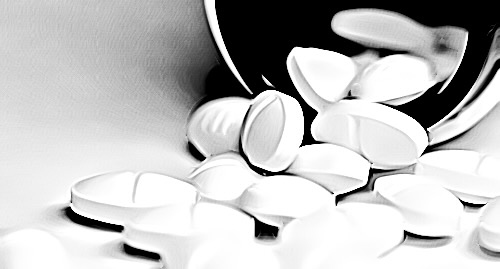The use of antidepressants has long been hailed as an effective aid to people suffering from symptoms of depression, social anxiety disorder, seasonal affective disorder, or dysthymia. One of the less common types of antidepressants is a drug called trazodone.
While trazodone isn’t as common as other antidepressants, it can still be misused and can lead to drug addiction. There’s a reason why this drug was never widely used in the medical community, even during its development. To understand the risks and effects of being addicted to trazodone, we need to learn what it is and how it works in the human body.
What is Trazodone?
Trazodone is primarily used to treat depression, insomnia, and sleep disorders by restoring the natural balance of serotonin, the feel-good hormone in our brain. As an atypical antidepressant, trazodone is not chemically related to other more commonly prescribed depression medications. Trazodone is also classified as a type of drug called serotonin antagonist and reuptake inhibitor (SARI).
While there’s a wide range of antidepressant medications used for first-line prescriptions, trazodone is usually only prescribed when other depression medications proved to be ineffective.
Withdrawal Symptoms
Withdrawal is the human body’s natural process of readjusting to the absence of a drug in its system. It is a set of symptoms your body experiences after abruptly stopping or reducing the chronic use of addictive substances like drugs and alcohol.
When a person is going through drug and alcohol withdrawal, they experience a particular set of symptoms and a high level of discomfort. Trazodone withdrawal works the same, but the symptoms may vary depending on the duration of use. Someone who’s been using the drug for a greater amount of time can potentially experience more intense symptoms. These symptoms include:
- Agitation
- Anxiety
- Headaches / Migraines
- Blurred Vision
- Lethargy
- Confusion
- Dizziness
- Trouble sleeping
- Irritability
- Nausea
- Excessive Sweating
- Seizures
Since trazodone is mainly used as an antidepressant, it’s possible for a person to experience adverse effects when they abruptly stop using the drug. A person using it to treat their depression may feel even more depressed during withdrawal.
Antidepressant or Sleeping Pill?
The drug trazodone was developed in the 1960s as a new type of antidepressant medication.

It wasn’t widely used back then until years after its development when medical professionals recognized trazodone’s potential benefits and started using it to treat sleep disorders. Because of the drug’s manipulation of serotonin levels, it was classified as an atypical antidepressant as it did not fall within the usual conventions of other medications similar to it.
Trazodone as an Antidepressant
Trazodone increases natural neurotransmitters in the central nervous system, which helps in restoring some of the depleted chemicals in the brain. Serotonin, which is in charge of regulating the body’s internal clock as well as mood and appetite, is one of those neurotransmitters. Trazodone then blocks the serotonin receptors in the brain, effectively increasing your body’s serotonin levels.
SSRIs and SNRIs are more common types of antidepressants used as first-line treatments for anxiety. Trazodone, on the other hand, is usually prescribed only when the initial anxiety medications have not been adequate for the patient.
Trazodone as a Sleeping Pill
Another benefit of trazodone is its ability to induce drowsiness or sleepiness as a side effect of the drug. Doctors prescribed it as off-label medication to treat insomnia. The effect has something to do with its impact on serotonin, which regulates a person’s appetite, sleep, and a general feeling of happiness. Since serotonin is at an all-time high due to the influence of trazodone, it can also induce a calming and relaxing effect as well as sleepiness.
Trazodone Side Effects
Even in its early days of use, it is wasn’t widely favored by doctors and medical professionals because of the negative side effects associated with it. While the drug’s side effects vary from person to person, some of the more common effects include dizziness, fainting, and an irregular heartbeat.
Trazodone and alcohol are considered a dangerous combination. Doctors strongly advise against drinking alcohol while taking trazodone as it can worsen its known side effects. Simultaneously, the drug itself can also enhance the effects of alcohol and can even be fatal in some cases.
How long does trazodone stay in your system?
According to a report from the Food and Drug Administration (FDA), when a person takes trazodone on an empty stomach, the peak plasma levels of the drug occur around an hour after taking it. With food, it takes more or less two hours to take full effect.
While it is relatively a fast-acting medication, it can stay for quite some time in your body. Trazodone has a half-life between five and nine hours. This means, on average, it will take seven hours to eliminate just half of the drug. It takes 1-3 days for the drug to be completely flushed out from a healthy adult’s body. The elimination half-life of a medication is the time it takes for the blood levels of that particular drug to be reduced by half.
Trazodone’s effect, however, is not the same for all people. There are many factors that can affect how effective and how long the drug can stay in your system, including:
- Dosage: Trazodone metabolites can stay longer in your system when taken at a higher dose. For small doses, it’s easier for the body to excrete the remnants of the drug.
- Age: There have been studies indicating that trazodone half-life can become longer in adults compared to teenagers and children.
- Weight: A person’s body mass and fat levels can significantly influence how fast the drug gets metabolized and stored in the body’s fat cells.
- Frequency of Use: Like dosage, taking trazodone for extended periods of time will also extend the duration of its stay in the body.
- Dosage Time: Detecting trazodone in the body may take some time depending on when it was last taken. Certain tests detect it after hours or days of taking it. Other tests can only detect traces of the drug after three months.
- Genetics and Metabolism: A person’s genetic makeup and metabolic rate also influence their liver function, which in turn affects the enzymes that help metabolize trazodone.

Addiction and Long-Term Use
Since Trazodone isn’t a drug commonly prescribed to patients, there’s very little evidence to suggest that it is an addictive medication. The calming and relaxing side effects, however, can cause people to develop a dependence on it and an increased potential for abuse.
Trazodone is generally safe to use and effective as long as it is utilized for its intended purpose and in small doses. Misuse of the drug can lead to more adverse side effects like:
- Hypotension
- Blurred Vision
- Confusion
- Angle-Closure Glaucoma
- Coordination Problems
- Serotonin Syndrome
Conclusion
Trazodone can be a dangerous and addictive drug if used other than what it’s intended for—an effective antidepressant and sleeping pill in small doses. Patients may find the relaxing side effects of it to be pleasant, but developing a drug dependence is never a good idea. In this case, the risks and side effects far outweigh the benefits you can get from taking it. It’s best to consult a doctor before even considering using trazodone as medication for your condition.
Sources:
https://www.accessdata.fda.gov/drugsatfda_docs/label/2017/018207s032lbl.pdf




